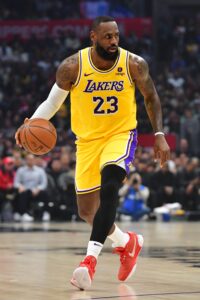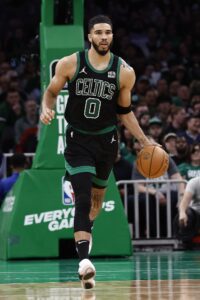Hoops Rumors is checking in on the 2024 offseason for all 30 NBA teams, recapping the summer’s free agent signings, trades, draft picks, departures, and more. We’ll take a look at each team’s offseason moves and consider what might still be coming before the regular season begins. Today, we’re focusing on the Orlando Magic.
Free agent signings
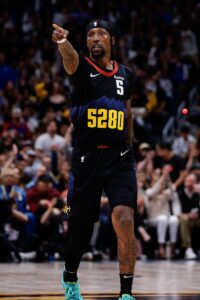 Kentavious Caldwell-Pope: Three years, $66,000,000. Third-year player option. Signed using cap room.
Kentavious Caldwell-Pope: Three years, $66,000,000. Third-year player option. Signed using cap room.- Goga Bitadze: Three years, $25,000,000. Re-signed using Early Bird rights.
- Moritz Wagner: Two years, $22,000,000. Second-year team option. Re-signed using Bird rights. Waived right to veto trade.
- Gary Harris: Two years, $15,000,000. Second-year team option. Re-signed using Bird rights. Waived right to veto trade.
- Cory Joseph: Two years, minimum salary ($6,772,731). Second-year team option. Signed using minimum salary exception.
- Jarrett Culver: One year, minimum salary. Non-guaranteed (Exhibit 10). Signed using minimum salary exception.
- Myron Gardner: One year, minimum salary. Non-guaranteed (Exhibit 10). Signed using minimum salary exception.
- Tre Scott: One year, minimum salary. Non-guaranteed (Exhibit 10). Signed using minimum salary exception.
- Jalen Slawson: One year, minimum salary. Non-guaranteed (Exhibit 10). Signed using minimum salary exception.
Trades
- Acquired the right to swap their own 2030 second-round pick with the Pelicans’ 2030 second-round pick and the right to swap their own 2031 second-round pick with the Pelicans’ 2031 second-round pick from the Pelicans in exchange for the draft rights to Antonio Reeves (No. 47 pick).
Draft picks
- 1-18: Tristan Da Silva
- Signed to rookie scale contract (four years, $17,567,626).
Two-way signings
Departed/unsigned free agents
Other moves
- Signed Franz Wagner to a five-year, maximum-salary rookie scale extension that begins in 2025/26. Projected value of $224,238,150 (starting at 25% of the cap). Projected value can increase to $246,661,965 (27.5% of the cap) or $269,085,780 (30% of the cap) if Wagner meets Rose Rule performance criteria. Includes 15% trade kicker.
- Renegotiated and extended Jonathan Isaac‘s one-year, $17.4MM contract. Increased 2024/25 salary by $7.6MM to $25MM. Added four years, $59,000,000. Partially guaranteed in 2026/27 ($8MM). Non-guaranteed in 2027/28 and ’28/29.
Salary cap situation
- Went below the cap to use room.
- Now operating over the cap ($140.6MM) and below the luxury tax line ($170.8MM).
- Carrying approximately $150.4MM in salary.
- No hard cap.
- Full room exception ($8MM) available.
The offseason so far
For the past several years, the Magic have built their roster patiently and incrementally, frequently re-signing their own veteran free agents to flexible, short-term deals and adding young talent through the draft while forgoing major splashes on the trade and free agent markets.
In some ways, they stuck to that approach again this offseason. Role players Goga Bitadze, Moritz Wagner, and Gary Harris all got new deals as free agents, with Wagner and Harris signing what have become Orlando specials: two-year contracts with strong first-year guaranteed salaries and team options on the second year.
I’m not sure there was another team out there prepared to give Wagner $11MM or Harris $7.5MM for the 2024/25 season, but Orlando, operating far below the luxury tax line, can comfortably afford those salaries. And the fact that the Magic were willing to go a bit higher than other teams might have earned them a couple key concessions — not only do both contracts have second-year team options, but both players agreed to waive their right to veto a trade, so if the Magic have the opportunity to make an in-season deal for a higher-salary player, Wagner and/or Harris could be used for matching purposes.
Bitadze’s deal, meanwhile, is guaranteed for three seasons, signaling his value in a free agent class that lacked many reliable options at center beyond Nic Claxton and Isaiah Hartenstein. Bitadze remains somewhat underrated. He’s entering his age-25 season, made 33 starts for a playoff team, and hit a career-high 60.3% of his field goals while blocking 1.2 shots in just 15.4 minutes per game. With Wendell Carter and Wagner also in the mix at center, the Magic have three solid – if unspectacular – options in the middle.
The two most lucrative contracts the Magic handed out this summer were to players who were already under contract for 2024/25. As a result of their extensions, Franz Wagner and Jonathan Isaac are now under team control through 2030 and 2029, respectively.
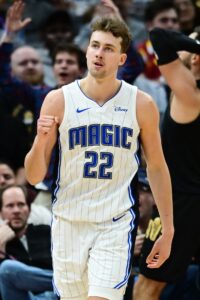 The Wagner investment (a projected $224MM+ over five years, beginning in 2025/26) is a bit of a tough pill to swallow for a player who has never averaged 20 points per game, made 28.1% of his three-pointers last season, and put up a dud in Game 7 of the first-round playoff loss to Cleveland (six points on 1-of-15 shooting). That deal is more about what the Magic believe the 23-year-old will become than what he is right now. Still, I’d feel a little better about it if Orlando could have gotten Wagner to agree to even a Desmond Bane-type contract, a little below the max.
The Wagner investment (a projected $224MM+ over five years, beginning in 2025/26) is a bit of a tough pill to swallow for a player who has never averaged 20 points per game, made 28.1% of his three-pointers last season, and put up a dud in Game 7 of the first-round playoff loss to Cleveland (six points on 1-of-15 shooting). That deal is more about what the Magic believe the 23-year-old will become than what he is right now. Still, I’d feel a little better about it if Orlando could have gotten Wagner to agree to even a Desmond Bane-type contract, a little below the max.
The Isaac renegotiation and extension ($84MM in total money over the next five seasons) actually might be the better value of the two deals. That may sound odd on the surface, given that the forward averaged just 15.8 minutes per game in 58 appearances last season. But it was his first full year back after missing most of three seasons due to knee issues, and when he’s healthy, Isaac is one of the league’s most impactful defensive players.
The Magic had a +10.9 net rating when Isaac was on the court last season, compared to a -0.3 mark when he sat. Plus, his new contract – which dips to around $15MM annually beginning in 2025 – is only fully guaranteed for the next two years, with a partial guarantee in 2026/27 and non-guaranteed salaries in the final two seasons.
Besides re-signing their own players, the Magic continued to add young talent to their roster in the draft. This year’s No. 18 selection was Orlando’s lowest top pick since 2012, so the team likely won’t count on Tristan Da Silva to play a significant role as a rookie. Still, the former Colorado forward, who made 39.5% of his three-pointers over his last two college seasons, makes sense on a roster that finished dead-last among 30 NBA teams in three-pointers made in 2023/24.
The summer of 2024 deviated from the Magic’s recent offseasons in one crucial way. After winning 47 games, the team was ready to take a bigger swing by adding a top veteran free agent to its young core. Orlando made use of its cap room to land Kentavious Caldwell-Pope, a three-and-D wing who has been a starter for two separate champions teams (the 2020 Lakers and 2023 Nuggets) in the past five seasons.
A 40.6% three-point shooter over the past four years, Caldwell-Pope should provide much-needed floor spacing for the Magic while further fortifying a defense that ranked third in the NBA last season. Perhaps just as importantly, he and fellow newcomer Cory Joseph will join Harris as the only players on Orlando’s roster who have won an NBA postseason series.
The Magic’s guaranteed deal with Joseph was a little surprising, given that he was waived by Golden State halfway through the 2023/24 season and didn’t find a job down the stretch. But like Caldwell-Pope, he has championship experience – having won a title with the Spurs in 2014 – and will provide veteran leadership in the locker room.
I had thought Orlando might target a point guard capable of playing a larger on-court role, especially with Markelle Fultz and secondary play-maker Joe Ingles departing in free agency. But the Magic appear set to rely on former No. 6 overall pick Anthony Black to take on increased responsibilities alongside ball-handlers like Jalen Suggs, Cole Anthony, Wagner, and rising star forward Paolo Banchero.
Up next
The Magic’s projected 15-man regular season roster looks full, but the team does have a pair of two-way spots open, with Trevelin Queen the only player currently on a two-way deal in Orlando. Non-guaranteed signees like Mac McClung, Jalen Slawson, Tre Scott, and Myron Gardner could end up competing for those spots; the club could also keep an eye on the waiver wire to see if any intriguing targets shake loose before opening night.
It’s worth noting that the Magic are operating about $20MM below the luxury tax line. Few NBA teams have that sort of financial flexibility at this point — only the Pistons, Jazz, and Spurs have smaller team salaries for 2024/25. That could make Orlando a popular trade partner for clubs looking to shed a little salary, though a deal along those lines is more likely to materialize during the season than in the preseason.
Two Magic rotation players are eligible for extensions up until October 21 and both are interesting cases. We’ll start with Jalen Suggs, a former No. 5 overall pick who is up for a rookie scale extension.
Unlike Wagner, Suggs won’t receive a maximum-salary offer, but after a season in which he knocked down 39.7% of his three-pointers and earned All-Defensive second team honors, the 23-year-old’s stock is on the rise and an extension won’t come cheap.
In the year before he signed a five-year, $131MM rookie scale extension with Minnesota, Jaden McDaniels averaged 12.1 PPG with a .398 3PT% and excellent defense. It’s safe to assume Suggs’ representatives will bring up that deal in negotiations with Orlando and make the case that Suggs (12.6 PPG, .397 3PT%, excellent defense) deserves a similar payday, or even a larger one, given his additional offensive responsibilities.
Carter will become eligible for a veteran extension on October 1, giving Orlando a three-week window to get something done. He still has a couple years left on his current contract, so if the two sides don’t work something out this offseason, they’ll have another chance in 2025.
As outlined above, Orlando has no shortage of options at center, but Carter – a solid defender who can stretch the floor – is the best of the bunch and has been a coveted target for teams in need of a big man (including the Pelicans). If the Magic can lock him up at a fair price, I expect they’ll do so, but it will likely take a significant bump on his current contract, which will pay him $22.8MM over the next two seasons. The Magic would be limited to offering him a starting salary worth up to 140% of next season’s estimated average salary.

 The Wagner investment (a projected $224MM+ over five years, beginning in 2025/26) is a bit of a tough pill to swallow for a player who has never averaged 20 points per game, made 28.1% of his three-pointers last season, and put up a dud in Game 7 of the first-round playoff loss to Cleveland (six points on 1-of-15 shooting). That deal is more about what the Magic believe the 23-year-old will become than what he is right now. Still, I’d feel a little better about it if Orlando could have gotten Wagner to agree to even a
The Wagner investment (a projected $224MM+ over five years, beginning in 2025/26) is a bit of a tough pill to swallow for a player who has never averaged 20 points per game, made 28.1% of his three-pointers last season, and put up a dud in Game 7 of the first-round playoff loss to Cleveland (six points on 1-of-15 shooting). That deal is more about what the Magic believe the 23-year-old will become than what he is right now. Still, I’d feel a little better about it if Orlando could have gotten Wagner to agree to even a 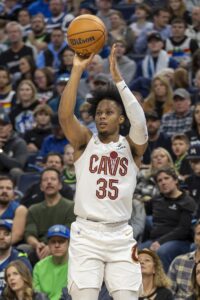 Cavaliers forward
Cavaliers forward 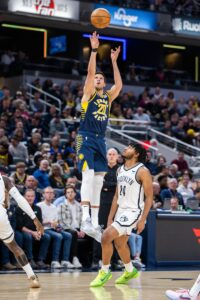
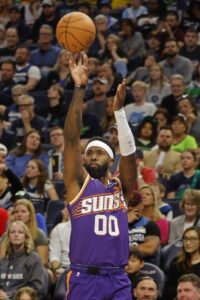
 Those changes began on the sidelines, where Phoenix opted to move on from head coach Frank Vogel less than one year after signing him to a five-year contract worth a reported $31MM. No team embarking on a coaching search this spring moved faster than the Suns, who zeroed in on Mike Budenholzer and announced his hiring less than 48 hours after confirming Vogel’s dismissal.
Those changes began on the sidelines, where Phoenix opted to move on from head coach Frank Vogel less than one year after signing him to a five-year contract worth a reported $31MM. No team embarking on a coaching search this spring moved faster than the Suns, who zeroed in on Mike Budenholzer and announced his hiring less than 48 hours after confirming Vogel’s dismissal.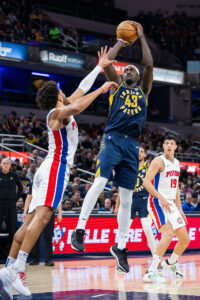 Currently,
Currently, 